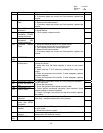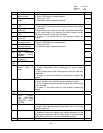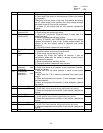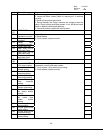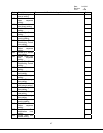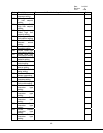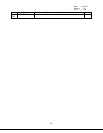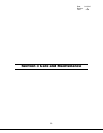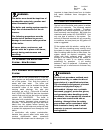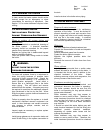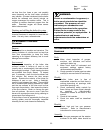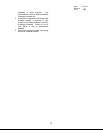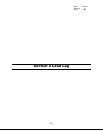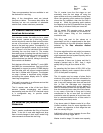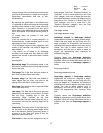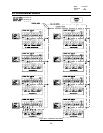
Date: 8-4-2010
Revision: 0
Form: 2396
WARNING:
The boiler area should be kept free of
combustible materials, gasoline and
other flammable liquids.
The boiler and venting system must be
kept free of obstructions of the air
louvers.
The following procedures must be
conducted as outlined to prevent
damage to and assure safe operation
of the boiler.
All cover plates, enclosures, and
guards must be in place at all times,
except during maintenance and
servicing.
3.1 CLEANING THE BOILER AND
SYSTEM – NEW SYSTEMS
3.1.1 PRE-BOIL OUT FLUSHING OF
SYSTEM
Much of the dirt and contamination in a new hot
water system can be flushed out before the boil
out of the system. First, flush the system of
waste with clear water. The boiler and
circulating pumps must be isolated through the
successive zones of the system to waste,
carrying metal shavings, dirt, pipe joint
compound, etc. with it. Follow with a chemical
flush. NOTE! Be CERTAIN that the chemicals
used to flush and boil-out the boiler and system
contain NO CHLORIDES. The boiler is
fabricated with austenitic stainless steels that
can be severely damaged when exposed to
chlorides. The removal of pipe chips and other
debris from the system before opening the
isolation valves to the boiler and pumps will help
to protect this equipment from damage by such
debris.
In combination with system contamination,
bacteria from ground water boiler water may
produce objectionable odors, sometimes
resembling the odorant used in natural gas. It is
important to keep these fumes from air intakes
that would distribute them throughout the
building.
3.1.2 BOIL OUT PROCEDURE
The boil out of the boiler and system is neither
difficult nor expensive. The chemicals needed
for cleaning are readily available. Tri-sodium
phosphate, and sodium hydroxide (lye) are the
most commonly used chemicals. Be certain the
chemicals used contain NO CHLORIDES. Use
only one type of solution in the system. The
amount of chemical required will vary according
to conditions, but one pound per fifty gallons of
water is suggested.
Fill the system with this solution, venting all air.
Then, with the circulating pump running, bring
the system to design or operating temperature.
After circulating water for two to three hours, the
system should be drained completely, and
refilled with fresh, softened water. Usually
enough of the cleaning solution will adhere to
the piping to result in an alkaline solution
satisfactory for operation. A pH reading
between 7 and 8 is preferred. If necessary, to
increase the pH, a small amount of cleaner may
be added.
WARNING:
51
The boil out procedure outlined must
be performed by, or under the direct
supervision of, a qualified technician.
The chemicals used present a hazard
of burns and physical injury if
mishandled. Always use a suitable
facemask, goggles, protective gloves,
and garments when handling caustic
chemicals. Do not permit the chemical
to come into contact with skin or
clothing. Always follow the safety
precautions on the container's label.
Add chemicals slowly and in small
amounts to prevent excessive heat
and agitation.



